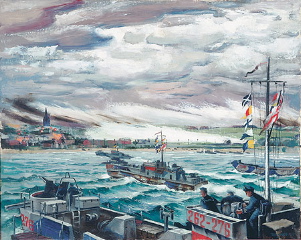The majority of the Canadian Reserve Force is composed of students and professionals working within communities all across Canada. Reservists have the challenging responsibility of balancing their military obligations with their professional and educational commitments.
In recent years, there has been a growing number of Reserve Force members participating in military training exercises and operational deployments- all of which require a leave of absence from their educational programs and civilian employment without pay. Reservists can expect to commit anywhere between a couple of weeks to 18 months to these operations. To ensure the best interest of these citizen soldiers, governments across Canada have worked to pass various forms of employment protection legislation. As a member of the Advisory Council of the Canadian Defence and Foreign Affairs Institute (CDFAI) described it, “Reservists’ service to the country is of great import, and we want to ensure that their jobs are protected.”
[captionpix align=”right” theme=”elegant” width=”300″ imgsrc=”http://natoassociation.ca/wp-content/uploads/2013/08/sandrareserves2.jpg” captiontext=””]
A Progressing Agenda
The idea of employment protection for the Canadian Reserves was studied following the publication of the 1994 Defence White Paper, which explained that there was a need to carefully analyze the role of the Reserves. The following year, the Special Commission on the Restructuring of the Reserves published a report containing 41 recommendations; the last of which called for employment protection. At a meeting of the committee held on 7 May 1996, the Minister of National Defence, David Collenette, did not accept the final recommendation as a result of the difficult nature of implementing that type of legislation.
For the most part, employers are supportive and accommodating to Reservists’ schedules, but they will likely find their extended absence to be proportionally onerous. If Reservists are fortunate enough to be guaranteed re-employment after lengthy military operations, they can be confronted with skill fade, the loss of seniority, and difficulty transitioning back to civilian society. In some instances, particularly in smaller businesses, Reservists may be forced to quit their jobs.
As a result of 9/11, the demand for military readiness increased, and the Government decided to revisit employment protection once again. In 2002, the Federal Government drafted amendments to the National Defence Act. Provisions were added to protect Reservists who were performing military operations under the request of the Government, but not for voluntary deployments. The movement to enhance a Reservist’s employment security progressed until 2006, when the Federal Government enacted the Job Protection Legislation. As of June 2012, the Federal Government, along with all Provincial and Territorial Governments passed employment protection legislation for Reservists.
Streamlining the Inconsistencies
The Job Protection Legislation is meant to prohibit discrimination against Reservists, and to secure their employment while they are participating in military operations. The progress of the legislation makessense – it benefits a large number of Reservists.
There is a significant issue with the lack of uniformity from one jurisdiction to the next. In fact, no two job protection legislations across the country are the same. Captain Jamie Cotter of the Royal Canadian Navy said that, “the difference is that each province has established its own legislation in context of their labour markets.” This means that Reservists from different jurisdictions are entitled to different kinds of protection, even if they are serving on the same operation. Unit commanders, Reservists, and their employers can misunderstand these variations.
The Federal Government has constitutional jurisdiction over the Canadian Armed Forces. This suggests that a simple solution of standardizing job protection legislation across the country could solve the inconsistencies. However, for this to successfully take place, every provincial and territorial government would have to agree to the standardization, which is very unlikely since the last time it worked was in 1867.
Governments across Canada have come a long way to protect the Reserve Forces’ jobs while they participate in training programs or deploy on operational missions. It is still an issue that needs to be refined. The Federal Government could encourage each jurisdiction to streamline employment protection legislation. If all Reservists are contributing to their communities and serving their country, they all deserve the same benefits offered by Canada’s job protection.




